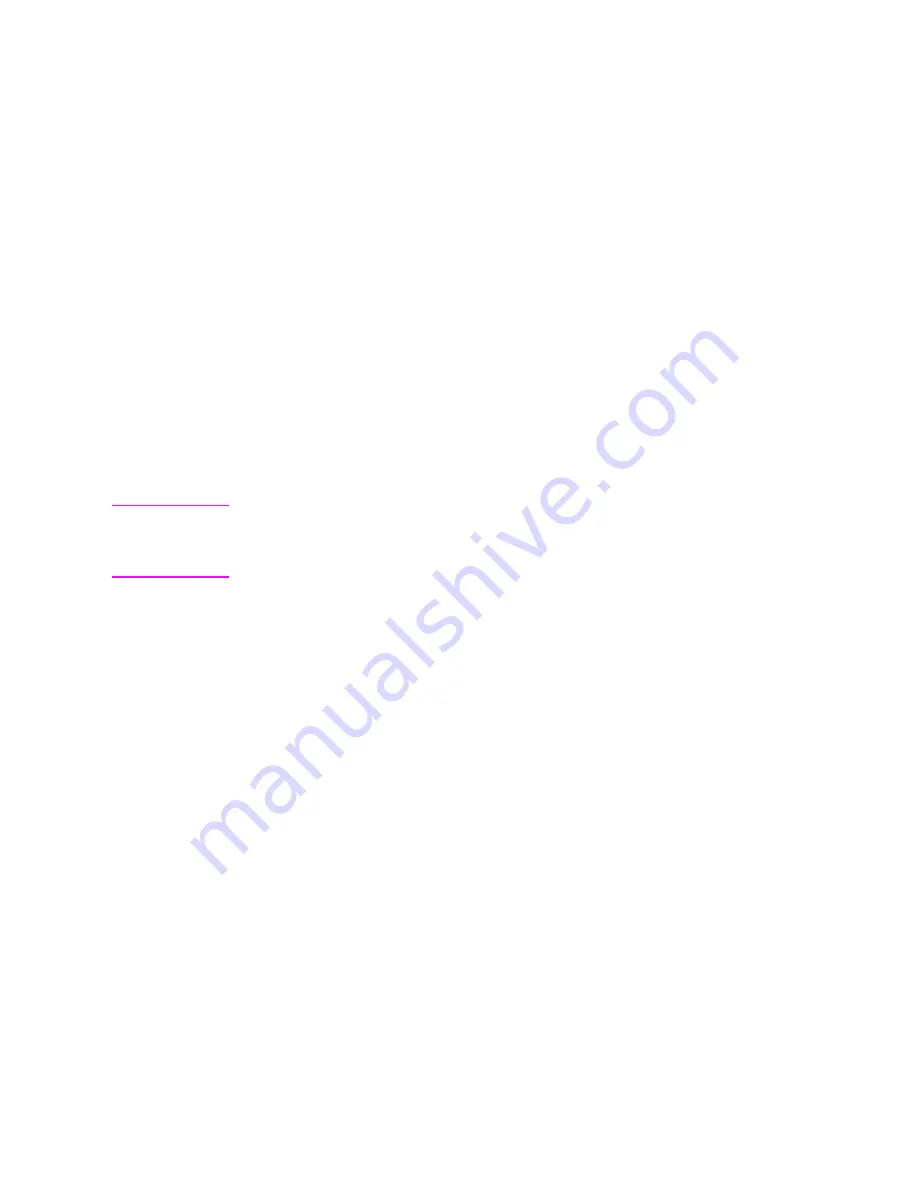
EN
Introduction 14-1
14
PCL Rectangular
Area Fill Graphics
Introduction
The PCL language includes commands for filling or shading
rectangular areas on the page with pre-defined patterns, and
allows creation and use of user-defined patterns. Pre-defined
patterns include eight shading patterns and six cross-hatch
patterns.
Note
User-defined patterns are not supported on all LaserJet family
printers. Refer to the “PCL Feature Support Matrix” in the PCL 5
Comparison Guide
.
The first step in filling an area, if using a user-defined pattern,
is to download the pattern (see Chapter 13). Next, position the
cursor (using cursor move commands) and specify the dimension
of the area (using the horizontal and vertical rectangle size
commands). The cursor identifies the upper left corner of the
rectangular fill area. Once the rectangle size and position are
identified, select the specific pattern (shading level (Figure
14-1), cross-hatch pattern (Figure 14-2), or user-defined
pattern), to be used for filling the rectangular area. Finally the
command is issued to fill the defined rectangular area. Once a
user-defined pattern has been downloaded, the fill procedure
can be repeated as often as required.
Rectangular Area Fill Procedure
1
For user-defined patterns:
if you have not done so already,
download the binary pattern data (User-Defined Pattern
Command -
E
C
*c#W
- Chapter 13).
2
Position the cursor (choice of various cursor commands -
Chapter 6).
Summary of Contents for LaserJet 4100
Page 1: ...Part I Click here to access Part II on hp com ...
Page 2: ......
Page 26: ...Contents 14 EN ...
Page 44: ...2 10 The Page EN ...
Page 54: ...3 10 The Print Environment EN ...
Page 70: ...4 16 PCL Job Control Commands EN ...
Page 80: ...5 10 Page Control Commands EN Figure 5 3 Changing Print Direction on a Page ...
Page 82: ...5 12 Page Control Commands EN Figure 5 4 Text Area Within the Page ...
Page 110: ...6 16 Cursor Positioning EN ...
Page 120: ...7 10 Fonts EN Figure 7 11 Bitmap Character Figure 7 12 Scalable Character ...
Page 122: ...7 12 Fonts EN ...
Page 152: ...8 30 PCL Font Selection EN ...
Page 166: ...9 14 Font Management EN ...
Page 182: ...10 16 User Defined Symbol Sets EN ...
Page 237: ...EN Character Descriptor Formats 11 55 Figure 11 5 Class 2 Character Data ...
Page 240: ...11 58 Soft Font Creation EN Figure 11 6 Portrait Character Example ...
Page 241: ...EN Character Descriptor Formats 11 59 Figure 11 7 Landscape Character Example ...
Page 270: ...13 4 The PCL Print Model EN Figure 13 3 Effect of Transparency Modes on Images ...
Page 276: ...13 10 The PCL Print Model EN Figure 13 4 Shading Patterns ...
Page 277: ...EN Pattern ID Area Fill ID Command 13 11 Figure 13 5 Cross Hatch Patterns ...
Page 290: ...13 24 The PCL Print Model EN ...
Page 297: ...EN Pattern ID Area Fill ID Command 14 7 Figure 14 1 Shading Patterns ...
Page 298: ...14 8 PCL Rectangular Area Fill Graphics EN Figure 14 2 Cross hatch Patterns ...
Page 341: ...EN Raster Graphics Example 15 33 Figure 15 11Example of Raster Graphic Image Data ...
Page 342: ...15 34 Raster Graphics EN ...
Page 370: ...16 28 Status Readback EN ...
















































